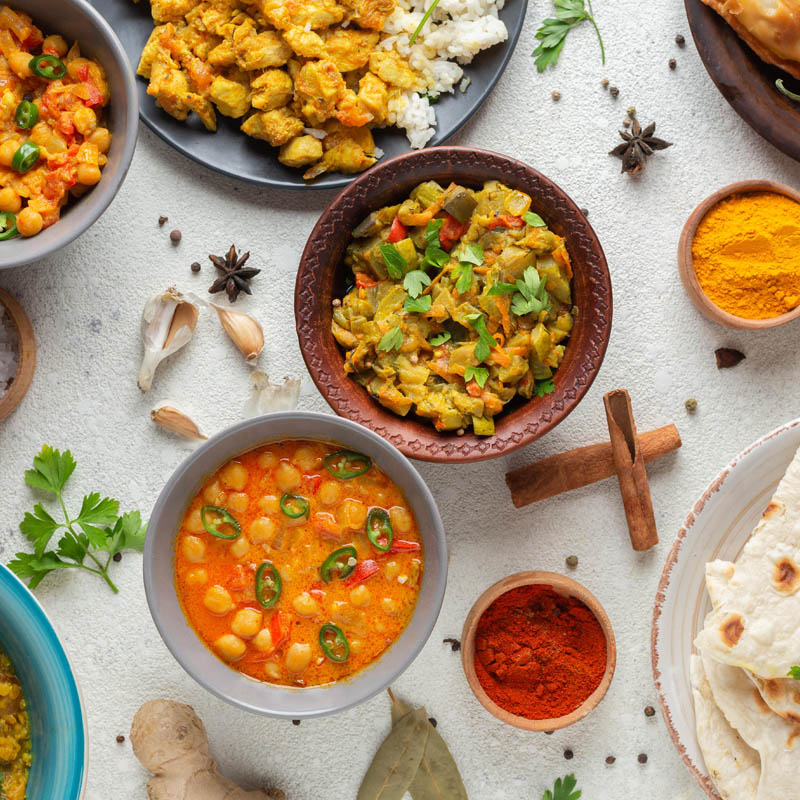Coming to Indian cuisine, the idea of ‘fusion’ has led to confusion among chefs.
- By Dr. Jagat Mangaraj, Principal.

The research objective of this study was to analyze the contribution of destination attributes towards customer satisfaction from the perspective of tourists at two of the most popular glamping destinations in India. The study focuses on the perception of customer satisfaction among cross culture tourists and local tourists at two of the major glamping destinations in India namely Rann Utsav, Gujarat, and Eco Retreat, Odisha. The method of research includes the collection of data using a close-ended questionnaire and random convenience sampling. A total of respondents was involved in the study. Descriptive analysis of the interviewed questions has been done for the discussion and scope of further research. This study indicates the importance of destination attributes in the customer satisfaction curve which aids in development and growth from the service provider’s perspective.
Keywords: Destination attributes, Glamping, customer satisfaction
The worldwide movement of fusion cuisine has arrived in India. The beauty of fusion cuisine lies not just in the adventurous marriage of flavours, but also in the idea of blending and presenting global / regional cultures. In Euro-Asian cuisine, one would find a blend of ingredients from both cultures.
The regional cuisines of Asia are doing well in India. However, coming to Indian cuisine, the idea of ‘fusion’ has led to confusion among chefs. It’s a dream for every chef to innovate a few dishes that would make him immortal in the world of cooking. Hence, every chef tries to innovate, but a lot of them fail to establish a creation in the market. Very few gifted chefs possess the instinct to blend ingredients and flavours to derive the desired taste of the market. Some chefs are of the opinion that the authenticity of old recipes should not be disturbed by blending ingredients. They believe that new, or a blend of, ingredients may imbalance the taste / flavours/appearances of dishes as the new ingredients are grown in different regions and have their unique aroma.
One aspect of Indian cuisine is that it always confuses customers. Many dishes taste and look different at different restaurants. For instance, dishes like paneer pasanda and korma may differ from restaurant to restaurant in colour or taste of the gravy. These variations are the ‘brainchild’ of a few chefs who claim them to be their innovations. Further, chefs assign innovative names to their creations and sell them as ‘chef special’.
When a customer likes a new dish by a chef, he tries looking for the same dish at another restaurant. Either the customer fails to find the same dish, or the dish does not match the earlier one in taste, colour and/or consistency. The customer then gets dissatisfied with the restaurant. This type of consumer behaviour spreads a sense of non-uniformity in the standardisation of Indian recipes. To some extent, certain Indian dishes are not well-documented and standardised, which gives chefs the liberty to play with Indian cuisine.
In fact, most chefs have tried creating at least one dish in the name of fusion cuisine. But, due to non-acceptability at other hotels, the dishes slowly meet untimely death. The actual test of fusion cuisine in India meets a serious thought and approach.
Indian cuisine is vast and has wide variations in terms of geographical location. Needless to say that India is a country of traditions. Also, it is a fact that presently, the entire country is in the process of a transition in culture, technology and lifestyle. Cuisine is bound to be affected by this transition. If the new food habits/style are affecting the foundation of the traditional Indian cuisine, then it’s a serious case for thought. Imagine a situation where all traditional/regional Indian cuisines are partially substituted with foundation ingredients. All traditional dishes will lose their authenticity.
Imagine a case where a kadai chicken is presented in white gravy, garnished with mint leaves; or a chicken tandoori served in beaten curd, garnished with fried, slit green chilies tempered with mustard and curry leaves. All this in the name of fusion cuisine. Such dishes will definitely challenge the traditionality and authenticity of Indian cuisine.
It has been found from a survey that a majority of dishes at hotels have remained unchanged or unsubstituted. Only a small percentage/segment of the menu is changed periodically. The number of such dishes may be the mix of the so called innovative dishes and local dishes.
Few F&B managers have opined that innovative dishes in Indian cuisine have, to some extent, managed to survive the test of time. But fusion dishes—the combination of continental and Indian dishes—have not been able pass the test. Probably, the strong Indian traditional culture and popular taste for food are barriers.
